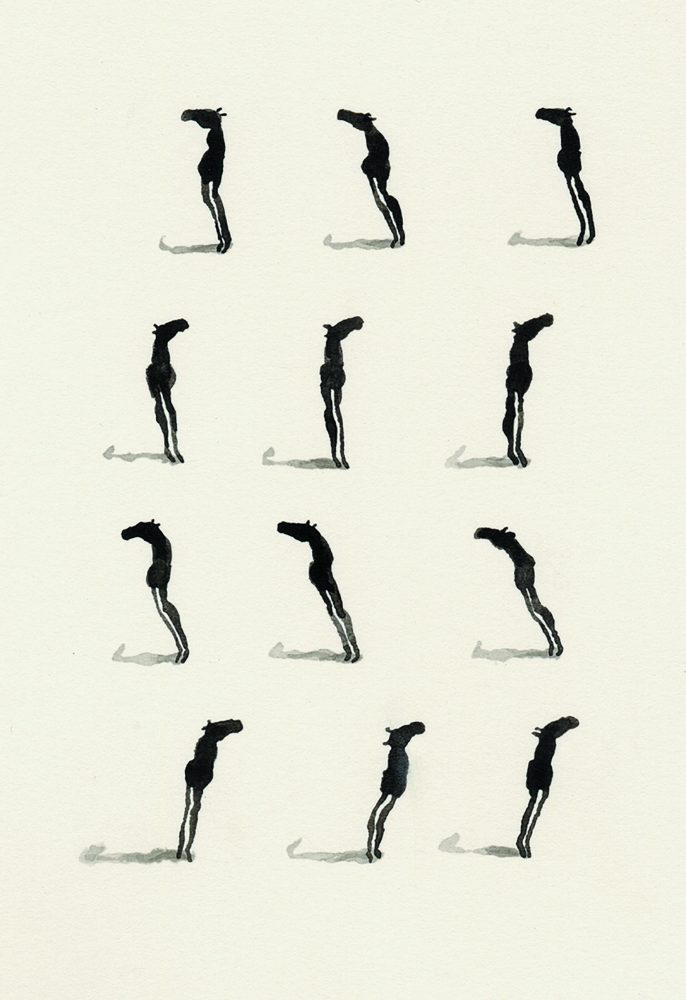Copyright as a lifesaver
In rechtReeKs, the Kunstenbond, the trade union for artists and everyone working in the cultural and creative sector, takes a close look at a topic that is fundamental to the professional practice of the professional artist each edition. This time Jet Hootsmans, a lawyer for the Kunstenbond and a specialist in intellectual property, writes about the protective effect of copyright. What if your client wants to use your work without any agreements having been made? For each column in this series, the Kunstenbond will choose a suitable illustration made by an artist who is unrelated to the issues in the article. This time it is an illustration by Iris Le Rütte.

A small job it would be, with the accompanying fee. Especially for a festival so the work would also only be placed for a few weeks. It became an unprecedented success and the organization wanted more. Everyone was enthusiastic. The artwork in question would get a prominent place at the festival in the coming years and an image of it would become the logo, so it would be used in all communications. That was just allowed, wasn't it? After all, the organization of the festival was the client. And they had paid for the work.
Copyright law provides copyright protection to anyone who makes anything
The artist calls me up, threateningly. No real agreements had been made. And what had been discussed was certainly not written down. Now the client seemed to be running off with his work. Fortunately there is copyright; protector, savior and best friend all in one. Copyright law offers copyright protection to anyone who creates anything.
Copyright applies to all work that is even slightly creative and original. Artistic value is irrelevant and something that is failed, unfinished or even ugly can also be copyrighted. The bar is (deliberately) not set very high. As soon as there is some creativity, that is usually sufficient. It is important that the work is original. It must be your own invention and not derived from the work of someone else. As soon as a work meets these conditions, it is protected by copyright. Copyright applies not only quickly but also automatically, namely as soon as that creative and original work can be observed. Registration is not necessary. In fact, it can't even be done.

Iris Le Rütte, s.t.
Article 1 of the Copyright Act directly indicates what copyright is all about: as the creator of a work, you have the exclusive right to publish and reproduce that work. This means that as a creator you have the sole right to determine what happens to your work. This is an exclusive right. As a creator, you are the only one who can dispose of your copyright. There are exceptions to this, for example in a collaboration, but this is the basis. Making public refers to everything that is put into the public domain. For example, exhibiting, posting online or offering for sale, but also renting, lending and using in a performance. Duplication refers to copying. In any form. So making a literal copy, but also making a postcard of a work, a model, translation or filming. As the copyright holder, you have control over any use, copy or adaptation that someone else wants to make of your work. If someone else wants to use your work, they can, but they need your permission. The law states that the person whose name is on the work is, in principle, the copyright owner. A golden tip is therefore to put your name on your work if at all possible. This increases your scope of protection. Moreover, in this way it is immediately clear who must be asked for permission if someone wants to use the work. Preferably use your name in combination with the date on which the work was created. For example: 'Design: Jet Hootsmans - May 2022'. You can also choose to use the copyright notice © put in front of your name. This comes from American copyright law and is adopted here quite often. It does not give you any additional rights but does act as a warning that the work may not be used without your permission.
As a copyright holder, you have control over any use, copy, or adaptation that someone else wants to make of your work.
Well, viewed in this way, copyright is indeed the savior here. The commissioner was allowed to use the artwork during the first festival. use because that was the thrust of the assignment and also what had been paid for. But no more. Any other use would again require permission from the artist. This applies to placing of the artwork during the following festival, but also for Using the design as a logo. The organization had to swallow it but fortunately they were convinced fairly quickly. The artist, by the way, was open to the desired use. Now it was a matter of agreeing on a reasonable fee in exchange for his permission. And to record it properly, of course.


